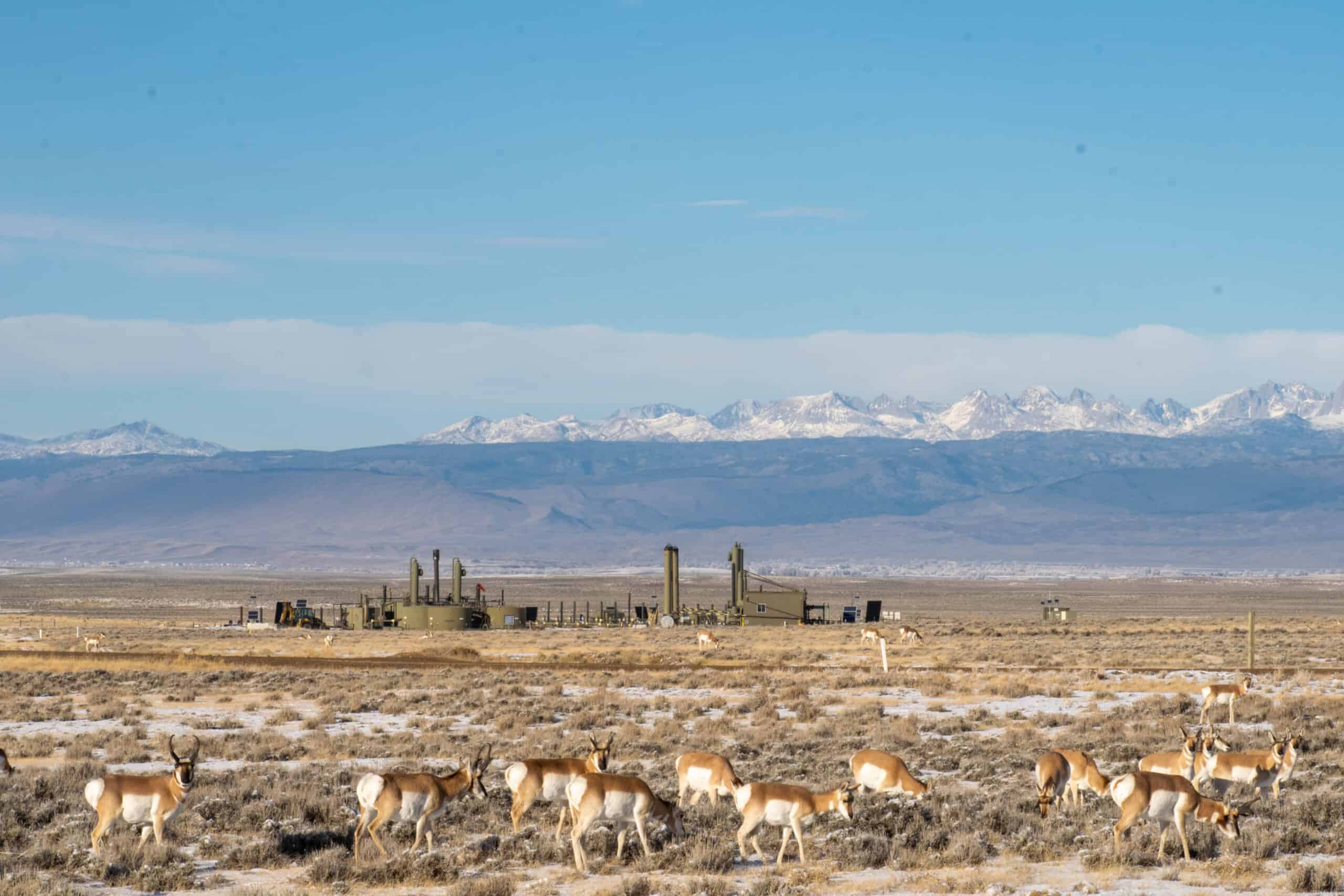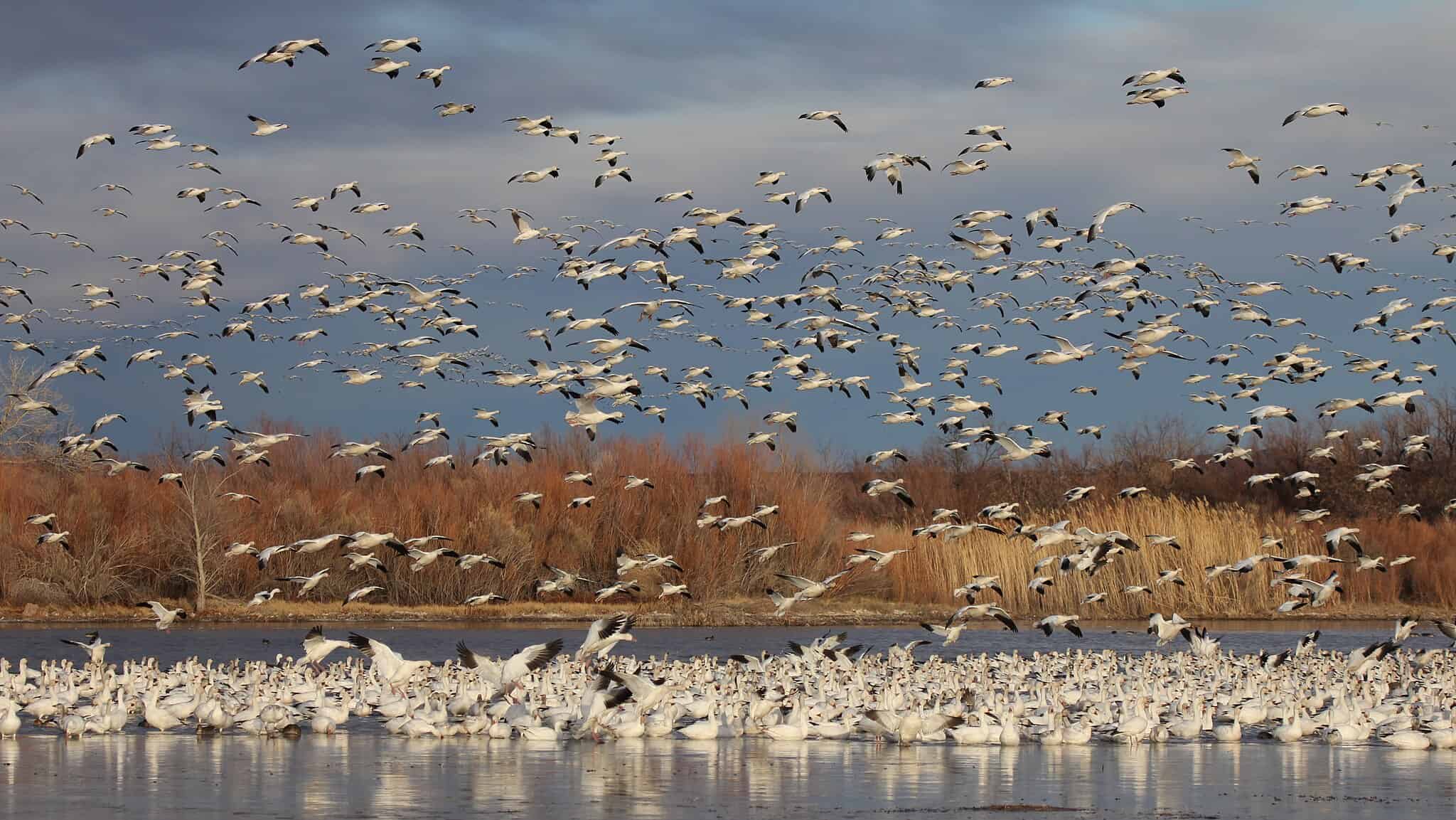Share this article
Proposed BLM rule prioritizes wildlife habitat over oil and gas development
The rule also increases returns for taxpayers
The Bureau of Land Management recently laid out revisions to its oil and gas regulations in a new proposed rule, including updates to long outdated monetary policies and new leasing practices aimed at reducing conflict with wildlife and their habitat.
“The rule would help steer oil and gas development away from important wildlife habitat or cultural sites, and instead toward lands with existing infrastructure or high production potential,” The Department of the Interior said in a press release.
Along with requiring a new $5 per acre Express of Interest (EOI) fee established in the Inflation Reduction Act, the proposed rule also provides a new approach to deciding which lands oil and gas companies can lease. An EOI is an early process where oil and gas companies request certain tracts of land be open to leasing. The BLM wants to give preference to leasing land that’s near existing oil and gas infrastructure, encouraging expansion of pre-existing operations.
The BLM sets a new precedent in this proposed rule by stressing the importance of avoiding conflict with wildlife habitat including wetlands and connectivity areas when leasing tracts of land in an EOI.“ Giving preference to leasing outside of important wildlife habitat would help to ensure that important seasonal ranges remain connected and that species can access important resources undeterred as they move across the landscape,” the BLM wrote in their notice of the proposed rule.
The proposal also completely prevents oil and gas development on national wildlife refuges, including restrictions on drilling on any lands that the U.S. Fish and Wildlife Service manages. The BLM states in its proposed rule that it won’t consider any EOI overlapping with a national wildlife refuge. The BLM and USFWS would work in cooperation with state wildlife agencies to determine important wildlife habitats that should be protected or closed off to new oil and gas development. However, the Secretary of the Interior will directly approve drilling operations, making drilling on national wildlife refuges possible on a case-by-case basis.
The BLM rulemaking also would raise the prices of lease bonds, royalty rates, minimum bids, and rental rates for oil and gas companies looking to develop projects on federal lands. The rule is also intended to increase returns to the public and disincentivize speculators or less responsible actors.
The recent proposal raises bonding rates, which have been the same for 60 years, from a $10,000 minimum to $150,000, disincentivizing future speculative leasing, a practice in which oil and gas companies lease public lands with little intention to develop them, often to the detriment of wildlife habitat and outdoor recreationists.
The Bipartisan Infrastructure Law in 2021 used $4.7 billion of taxpayer funds to plug up orphaned wells on federal lands. The proposed rule would encourage more responsible oil and gas development and place less burden on taxpayers resulting from reclamation efforts.
The BLM is accepting comments on the proposed rule through Sept. 22. Check out TWS’s Issue Statement on oil and gas development in the Rocky Mountain West.
Header Image: A herd of pronghorn (Antilocapra americana) adjacent to oil development in Wyoming. Credit: Tara Boucher/BLM Wyoming








